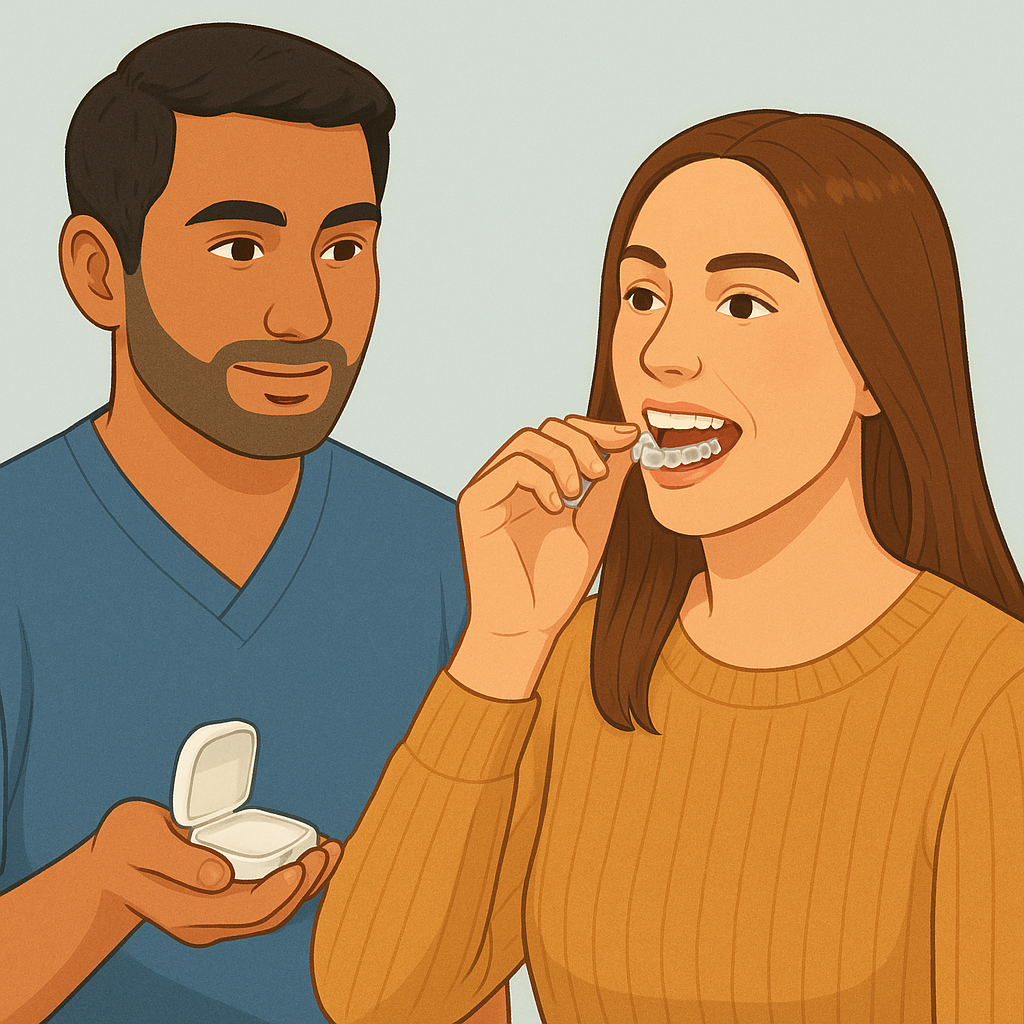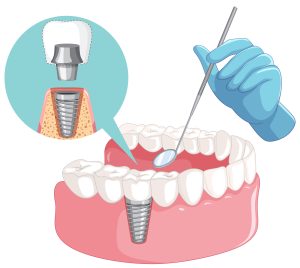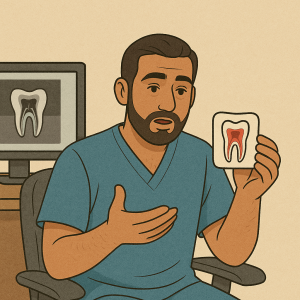Congratulations!
A beautiful, healthy smile is ahead — with a proper bite and straight teeth.
We’ve prepared this guide to answer your most important questions and help your treatment go smoothly, clearly, and effectively.
1. How many hours a day should you wear your aligners?
At least 20–22 hours per day.
Remove your aligners only for meals, drinks (other than water), and oral hygiene.
Every missed hour delays your results. The more consistently you wear them, the faster and more reliably the system works.
2. How to put on and take off your aligners correctly
Putting on:
– Make sure you’re using the correct aligner number.
– Place it gently using your fingers — do not bite down to seat it.
– Ensure it fits snugly over all teeth without gaps.
Removing:
– Start from the back teeth.
– Use both hands and remove slowly, without jerking.
– If it feels tight, gently wiggle it from side to side.
3. Can you eat or drink while wearing aligners?
No.
Always remove your aligners before eating or drinking anything except plain water.
Hot, sweet, or colored drinks can stain or damage the material.
After eating, brush your teeth. If that’s not possible, rinse your mouth — and your aligners — thoroughly.
4. How to care for your aligners
– Clean your aligners with a soft toothbrush under lukewarm (not hot!) water morning and night.
– You may use toothpaste, but make sure it doesn’t contain abrasives or whitening agents.
– Once or twice a week, you can soak them in a cleaning solution (as recommended by your doctor).
– Always store your aligners in a clean, dry case.
– Never wrap them in a napkin — that’s the most common way people lose them in cafes, at work, or visiting friends.
5. What to do if an aligner is lost or cracked
– Don’t panic. If you were close to switching — you may move on to the next aligner.
– If not, go back to the previous one temporarily.
– In any case — contact your orthodontist as soon as possible.
– The most important thing: don’t leave your teeth without an aligner for more than 24 hours.
6. How often are check-ups?
Usually once every 6–8 weeks, unless your doctor advises otherwise.
At these visits, your progress is reviewed and your next aligners are given.
7. Comfort
– Mild pressure is normal in the first few days — that means the aligners are working.
– Some patients notice a slight change in speech at first. This is temporary — most people adapt completely within 2 to 4 days, up to a week.
– If the aligner hurts, doesn’t fit fully, or rubs — contact your doctor.
8. Things to avoid
– Eating or drinking anything (except plain water) while wearing aligners.
– Rinsing or cleaning your aligners with hot water — it can warp them.
– Storing your aligners in napkins, pockets, or open surfaces — that’s how most get lost or thrown away.
– Using abrasive or whitening toothpaste, alcohol, or antiseptics like chlorhexidine.
– Biting, bending, or trying to “adjust” your aligners on your own.
– Forgetting to put your aligners back in after meals.
9. Helpful reminders
– Change your aligners on schedule, as directed by your orthodontist. Set a reminder if needed.
– Keep your previous aligner — in case the current one is lost, it can be a temporary backup.
– Take your case with you — always. Even if you’re stepping out “just for a bit.”
– Take progress photos. A couple of months in, you’ll be amazed.
– If something feels off — ask your doctor. Better to check than guess.
And finally
You’ve already done the hardest part — starting treatment.
Now it’s just one step at a time, one day, one aligner after another.
We’re with you every step of the way.
And if you ever have questions — don’t hesitate to reach out.




